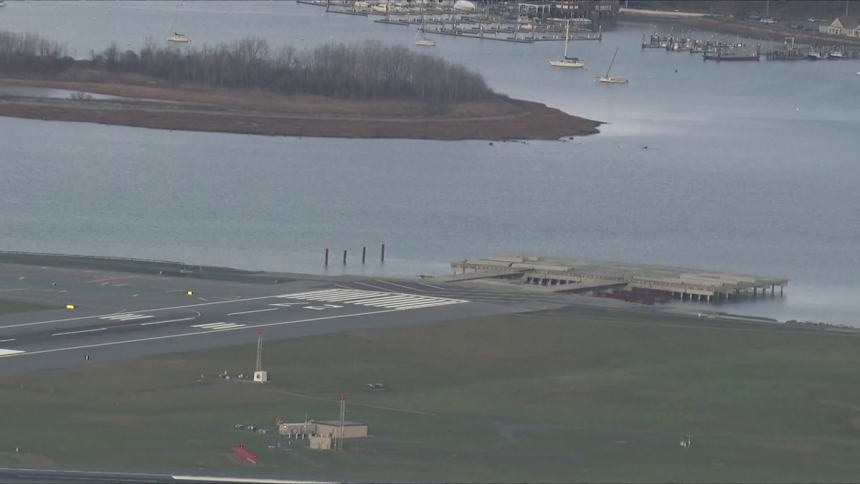The busiest runway at Boston’s Logan International Airport reopened Friday after a 75-day closure during which construction crews worked on safety upgrades. Runway 9-27 is undergoing a major safety upgrade to install an engineered materials arresting system, otherwise known as an EMAS.”It stops aircraft that overrun or undershoot the runway,” Deputy Director of Airfield Projects Sara Dennechuk said.EMAS material is a crushable concrete — similar to a runaway truck ramp on a highway. It’s meant to slow down an aircraft at a bit of an incline until it comes to a stop.”We hope we never have to use this; however, we have seen in the past in other airports it has been used to safely arrest aircraft,” Dennechuk said.For this phase of the project, the runway will be closed through Nov. 15. Another 75-day closure will happen next year.Because of Logan’s location, some of the EMAS is being built on the water.”We’re working with the tide,” Dennechuk said. “We’re working with barges coming in with precast. We have cranes on the land, cranes on the water, so it is a logistical tap dance to get all of this done in two 75-day windows.”More than 1,000 flights arrive and depart from Logan each day. During the runway closure, the airport’s flight capacity was limited. “Typically, during peak time in the afternoon, we’ll average 50 to 55 flights per hour,” said Bob Lynch, deputy director of operations at MassPort. “The loss of this runway brings it down to like 40.”
The busiest runway at Boston’s Logan International Airport reopened Friday after a 75-day closure during which construction crews worked on safety upgrades.
Runway 9-27 is undergoing a major safety upgrade to install an engineered materials arresting system, otherwise known as an EMAS.
“It stops aircraft that overrun or undershoot the runway,” Deputy Director of Airfield Projects Sara Dennechuk said.
EMAS material is a crushable concrete — similar to a runaway truck ramp on a highway. It’s meant to slow down an aircraft at a bit of an incline until it comes to a stop.
“We hope we never have to use this; however, we have seen in the past in other airports it has been used to safely arrest aircraft,” Dennechuk said.
For this phase of the project, the runway will be closed through Nov. 15. Another 75-day closure will happen next year.
Because of Logan’s location, some of the EMAS is being built on the water.
“We’re working with the tide,” Dennechuk said. “We’re working with barges coming in with precast. We have cranes on the land, cranes on the water, so it is a logistical tap dance to get all of this done in two 75-day windows.”
More than 1,000 flights arrive and depart from Logan each day. During the runway closure, the airport’s flight capacity was limited.
“Typically, during peak time in the afternoon, we’ll average 50 to 55 flights per hour,” said Bob Lynch, deputy director of operations at MassPort. “The loss of this runway brings it down to like 40.”











